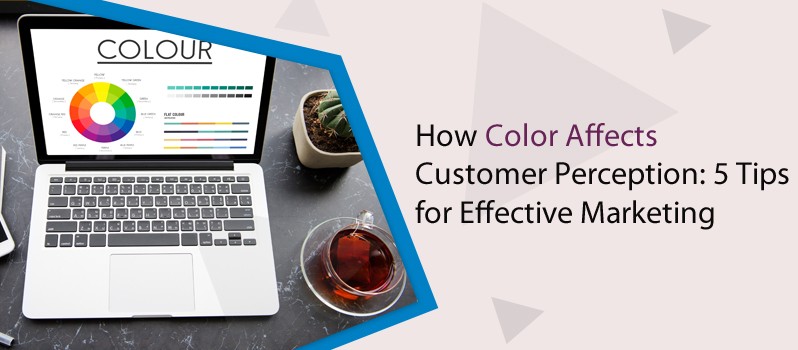How Color Affects Customer Perception: 5 Tips for Effective Marketing
This article is about the psychology of colors and their effect on customer’s perception. This is one of the many tips that successful marketers need to take into account when it comes to their marketing strategies; this includes using colors in your company logo, choosing a color scheme for your website, or even picking out which colors to use in an Instagram post! Color affects customer perception most.
What is a color’s effect on perception?
When it comes to customer perception, color has a big impact. Colors can affect how people feel, think, and behave.
Every person perceives colors differently. This is because different colors stimulate different parts of the brain. This means that the way you use color in your marketing can have a huge effect on how people perceive your brand.
Here are some tips for using color effectively in your marketing:
1. Choose colors that are well-known and familiar to your target audience. This will make your brand more memorable and attractive to them.
2. Use contrasting colors to create visual interest. This will help customers focus on your products or services more easily.
3. Use complementary colors to create a sense of balance and harmony. This will create a favorable impression on customers.
4. Use color to create a sense of warmth or comfort. This will make customers feel relaxed and happy when they interact with your brand.
How can sales be improved with the use of colors?
The use of color in marketing can have a huge impact on customer perception. When done correctly, colors can create a sense of calm or excitement, help customers to make decisions quickly, and increase sales.
When it comes to color in marketing, it is important to understand the theory behind it. Colors affect the emotions that we feel, which in turn can influence our behavior. For example, blue can promote relaxation and peace. On the other hand, red can be stimulating and encouraging.
It is also important to consider the different types of customers that your business serves. Different colors are effective with different groups of people. For example, green is best suited for health-conscious individuals who want to stay healthy and fit. Yellow is good for those who are looking for stimulation and excitement.
By understanding how color affects customer perception, businesses can improve their sales by using colors strategically.
5 Tips for Effective Marketing
How color affects customer perception is an important topic for effective marketing. Here are five tips for increasing the impact of your marketing campaigns based on consumer perceptions of different colors:
1. Use Color to Increase Brand Engagement
One of the most effective ways to increase brand engagement is to use color in your marketing campaigns. When customers see your brand using colorful content, it increases their likelihood of engaging with and supporting your company.
2. Use Color to Increase Cognitive Load
Another way to increase cognitive load and foster brand loyalty is to use color in your marketing campaigns. When customers see a complex or colorful design, it makes them more likely to remember and engage with your brand. This can lead to increased sales and customer loyalty.
3. Use Different Colors for Different Messages
It’s important to use different colors for different messages in order to make sure that all your marketing messages are communicated effectively. For example, you might want to use blue for calming messages and green for energizing messages. This will help you target the right audience with the right message.
4. Use Color as a Means of Personalization
Personalization can be one of the most powerful tools for increasing customer loyalty and retaining customers . This can be done through branding, as well as by using different colors for different messages.
5. Use Color to Influence Mood and Associations Color is a powerful tool in your brand’s arsenal because it can influence mood through associations and feelings. For example, red often evokes passion and anger, while green symbolizes calmness, serenity and security.
6. Choose the Right Colors When you need to create an emotional response from your audience, consider using the right colors for your message. For example, when you’re trying to convey urgency through your marketing efforts, consider using yellow text on a blue background.
Conclusion
When it comes to effective marketing, understanding how color affects customer perception is key. Not only can this help you create a more attractive website or product, but it can also help you connect with your target audience in a more meaningful way. By knowing what colors affect different customers the most and using them strategically in your marketing materials, you can increase your chances of success. Thanks for reading!




